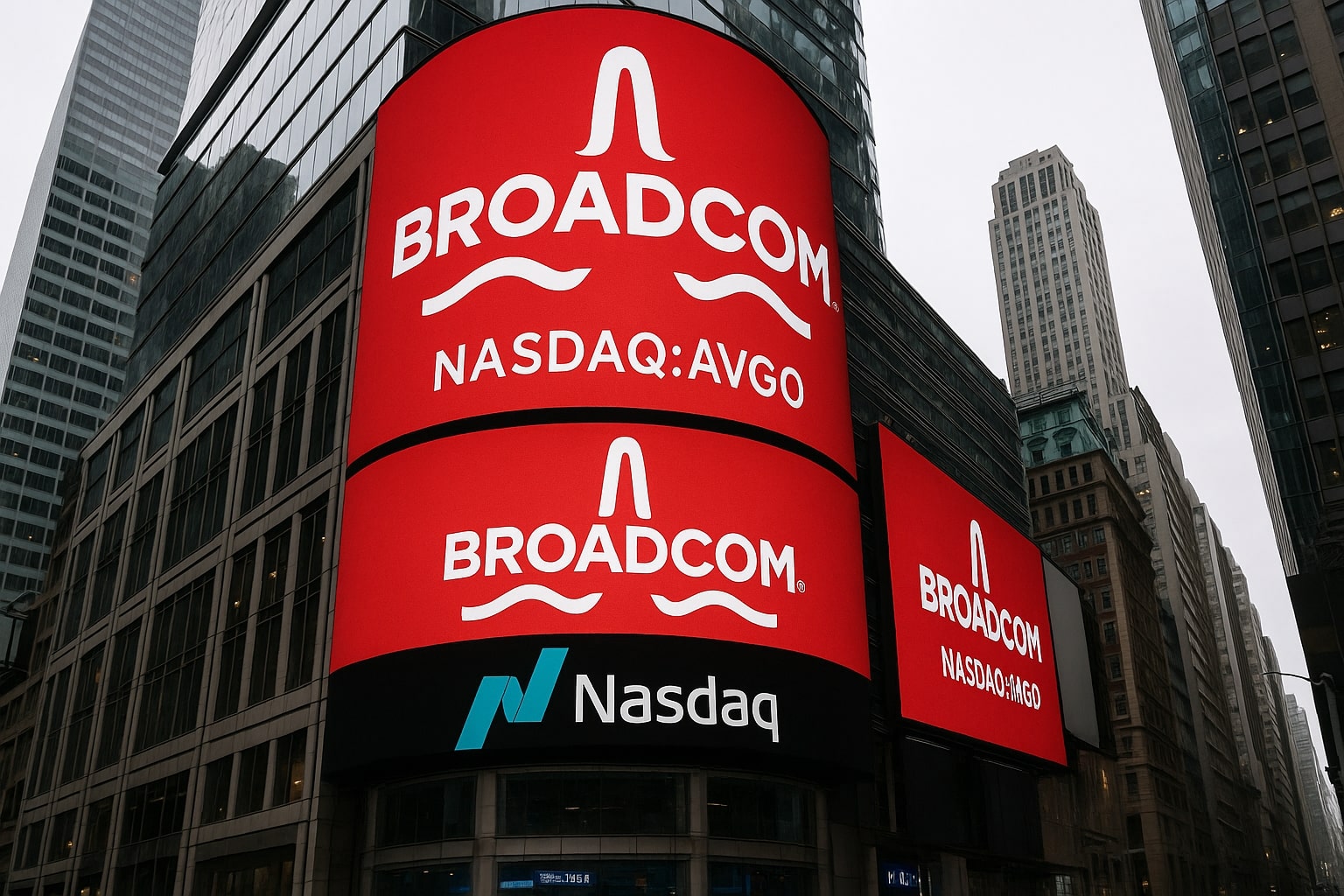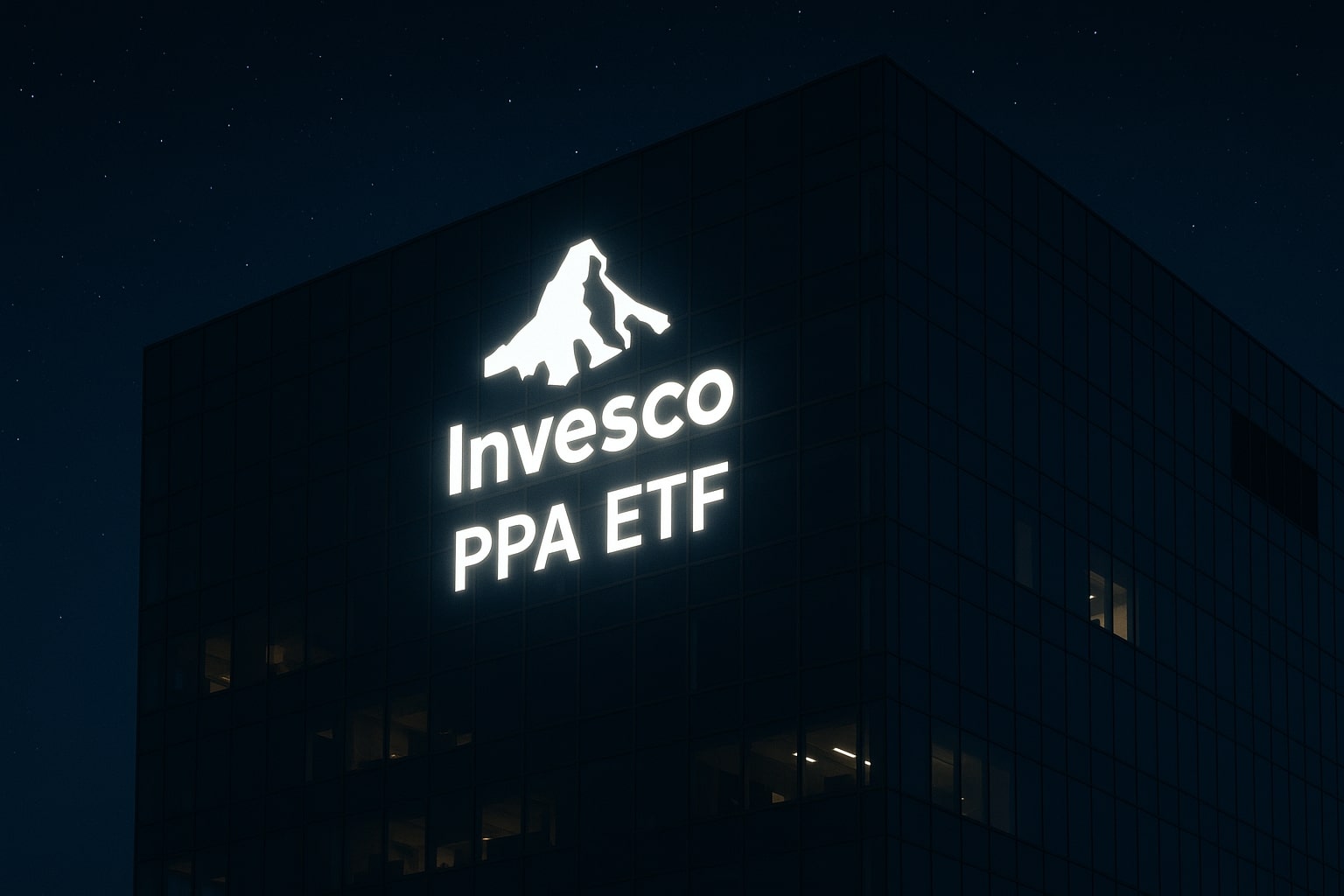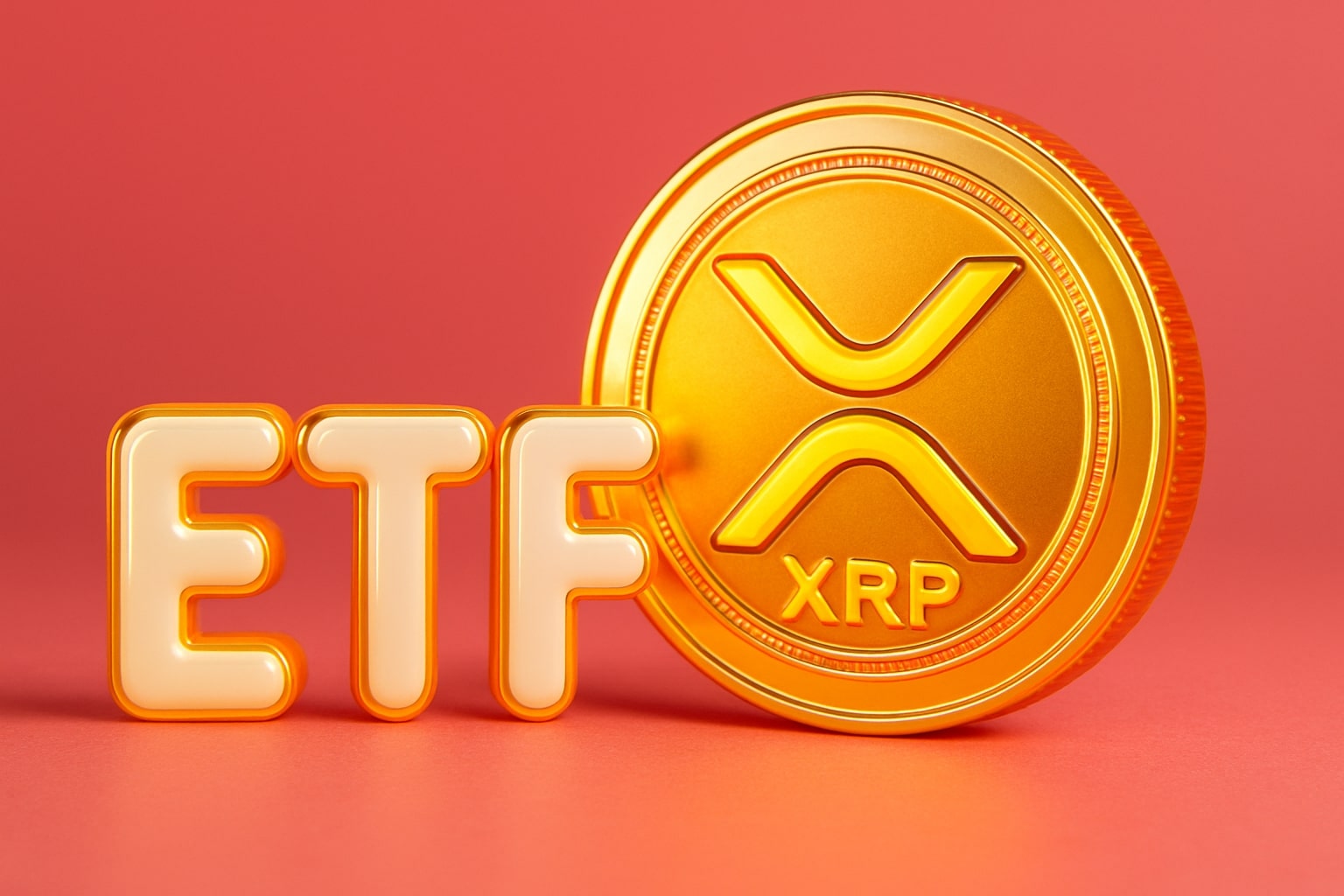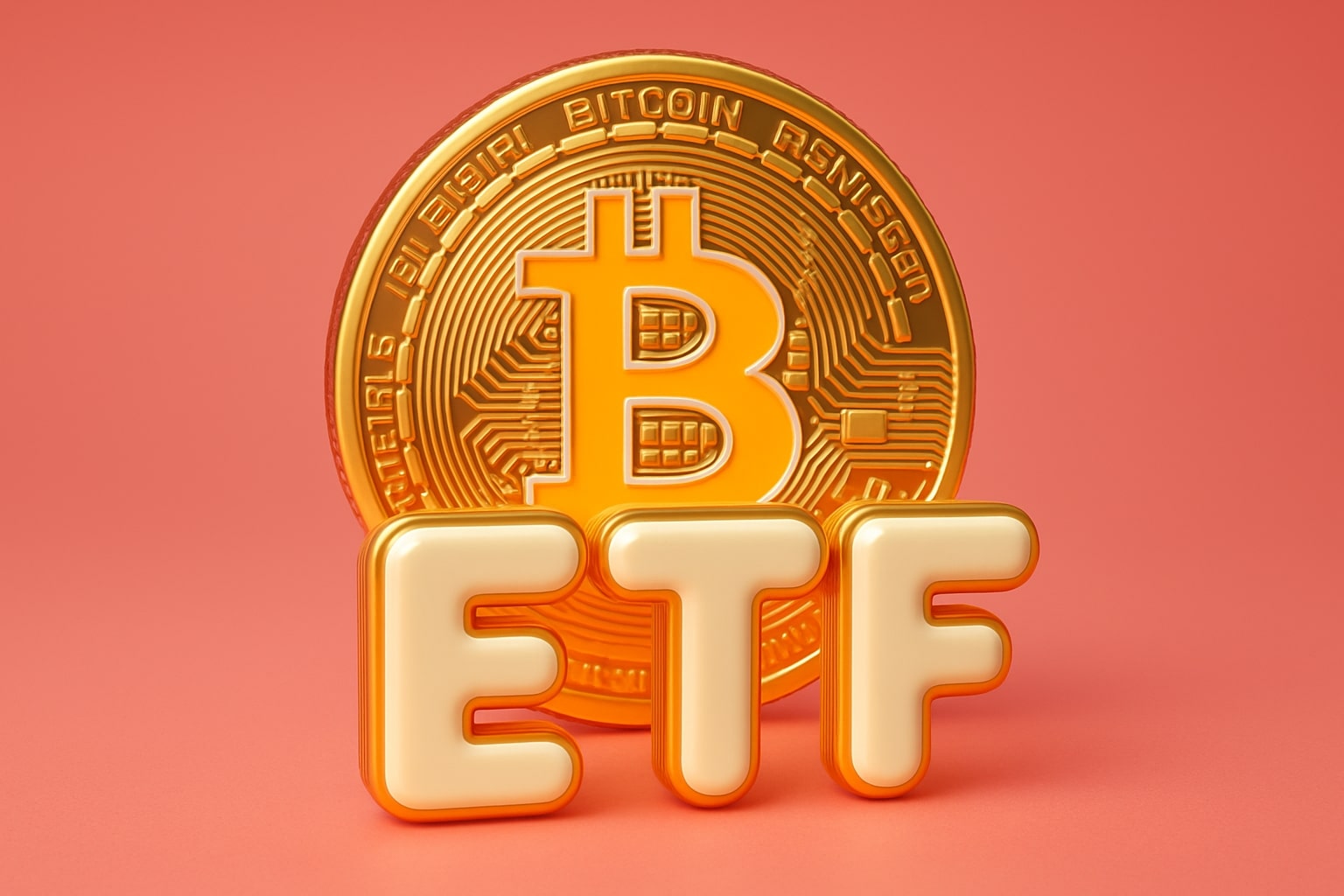
Broadcom Stock Forecast: NASDAQ:AVGO Pushes Toward $300 as AI Fuels Rally
Broadcom’s AI revenue hits $4.4B, VMware drives 25% growth, and Q3 guidance targets $15.8B sales with strong free cash flow expansion | That's TradingNEWS
NASDAQ:AVGO pushes higher as Broadcom’s AI engine drives valuation
Broadcom Inc. (NASDAQ:AVGO) is trading around $299.43, up 0.48% intraday, sustaining a market cap of $1.40 trillion and placing itself firmly among the technology giants fueling the artificial intelligence boom. The stock sits just below its all-time high of $317.35, with an 88.4% gain over the last year, far outperforming the S&P 500’s 15.6% advance. Average daily volume of 20.7 million shares underscores deep liquidity, with institutional holders controlling nearly 80% of the float. The forward P/E ratio stands at 36.3x, supported by consensus earnings projections that imply solid long-term growth. Investors remain focused on the upcoming Q3 FY25 earnings on September 4, where the company is guiding revenue to $15.8 billion, up 20.9% year-on-year, with EBITDA margins expected to hold above 66%.
AVGO’s AI semiconductors and networking dominance set growth trajectory
Broadcom’s semiconductor division has become the centerpiece of its AI story, with Q2 FY25 revenue climbing 20% to $15 billion, supported by $4.4 billion in AI-related sales alone. AI networking revenue surged 170% year-over-year, while total AI semiconductor sales grew 46%. Demand for the Tomahawk 6 switch—capable of 102.4 terabits per second and connecting clusters of more than 100,000 accelerators—has been overwhelming. Management expects AI semiconductor sales to climb to $5.1 billion in Q3, a sequential 15.9% increase, marking ten consecutive quarters of growth. The Jericho4 Ethernet fabric and Tomahawk Ultra further solidify Broadcom’s role as the backbone of hyperscale AI clusters. CEO Hock Tan has reiterated a serviceable addressable market of $60–90 billion for custom XPUs by 2027, highlighting how Broadcom’s partnership with hyperscalers such as Google, Meta, and Apple anchors long-term visibility.
VMware integration reshapes NASDAQ:AVGO revenue model
The VMWare acquisition is delivering faster-than-expected results, with Broadcom’s Infrastructure Software segment now 44% of total revenue, growing 25% year-over-year. VMware Cloud Foundation adoption has exceeded 87% of Broadcom’s top 10,000 customers, creating a sticky three-year contract base and a surge in annual recurring revenue. The partnership with NVIDIA allows VMware customers to run GPU-optimized workloads, while Broadcom’s XPUs provide cost-effective alternatives. This dual offering strengthens lock-in and enhances ARR visibility, which already shows double-digit growth. The strategy to push private cloud adoption and “AI-ready” infrastructure is resonating, particularly among enterprises repatriating workloads from public cloud providers. With VMware driving subscription revenue and software margins above 80%, Broadcom has created a balanced growth profile that blends AI hardware demand with recurring software cash flows.
Financial strength underpins Broadcom’s shareholder returns
For Q2 FY25, Broadcom reported operating income of $9.8 billion, up 37% year-on-year, on gross margins of 79.4%. Adjusted EBITDA reached $10 billion, or 67% of revenue. Free cash flow came in at $6.4 billion, surging 44% year-over-year, equating to $1.30 per diluted share. FY25 free cash flow is expected to reach $30 billion, expanding to as high as $38 billion in FY26. Broadcom has consistently funneled this cash into dividends and buybacks. The dividend yield currently stands near 0.79%, with a payout ratio of 81.5%, and management has a 13-year record of consecutive dividend increases. Over the last twelve months, Broadcom retired 6.1% of its float, and since early 2023, it has reduced outstanding shares by 14.3%. With such strong cash generation, double-digit dividend increases are anticipated to continue. Full insider transaction history is available here.
NASDAQ:AVGO valuation remains compelling versus peers
Despite its $1.40 trillion market cap, NASDAQ:AVGO trades at valuations that remain attractive against peers. Its forward P/E of 36.3x compares with Snowflake at 184x and Salesforce at 21x, while its PEG ratio of 1.40 suggests reasonable growth-to-valuation balance. Price-to-sales stands at 25.2, reflecting the premium attached to its AI leadership, yet the recurring software revenue base gives it stability missing from many hardware-centric peers. Analysts’ one-year price target averages $302.16, with the high at $317.35 and upside scenarios extending toward $350 if AI semiconductor sales beat guidance. The stock’s 52-week range between $134.90 and $317.35 highlights the explosive re-rating since the AI cycle began.
Balance sheet and risk profile of NASDAQ:AVGO
Broadcom carries $40.5 billion in long-term debt, largely from the VMware acquisition, against $11.1 billion in cash, leaving net debt of around $29 billion. While leverage is significant, debt service remains highly manageable, with a weighted average coupon of 3.8% and maturity of seven years on fixed-rate obligations. The floating-rate tranche of $8 billion matures in 2.6 years at 5.3%. The company’s ability to consistently generate over $20 billion in annual operating cash flow significantly offsets refinancing risks. Still, risks remain: over-investment in AI capacity by hyperscalers could cool demand, while political tensions and tariffs under Trump’s trade agenda could affect Broadcom’s 20% China revenue exposure. A potential overbuild of AI compute clusters in 2026 could also temporarily pressure sales growth.
Technical outlook for NASDAQ:AVGO stock
Live chart here. Shares have consolidated just under $300, with the 50-day moving average at $284.18 and the 200-day at $225.15 acting as strong support. The RSI suggests neutral momentum, while volume inflows remain high. Support is visible at $293.78 and $284, with resistance at $302 and the prior peak of $317.35. A breakout above $317 could extend gains toward $350, while a breakdown below $284 risks testing $260. Given the elevated institutional ownership and constant AI-related order flow, dips are likely to attract aggressive accumulation.
That's TradingNEWS
Read More
-
PPA ETF at $154: Can This Defense ETF Keep Beating ITA and SPY?
14.12.2025 · TradingNEWS ArchiveStocks
-
XRP ETFs XRPI and XRPR Pull In $975M While XRP-USD Fights To Hold $2
14.12.2025 · TradingNEWS ArchiveCrypto
-
Natural Gas Price Forecast: NG=F Hits $4.11 As Warm Winter Outlook Puts $3.913 Support At Risk
14.12.2025 · TradingNEWS ArchiveCommodities
-
USD/JPY Price Forecast - Dollar to Yen Can BoJ’s 0.75% Shock Break The 155–158 Range?
14.12.2025 · TradingNEWS ArchiveForex


















